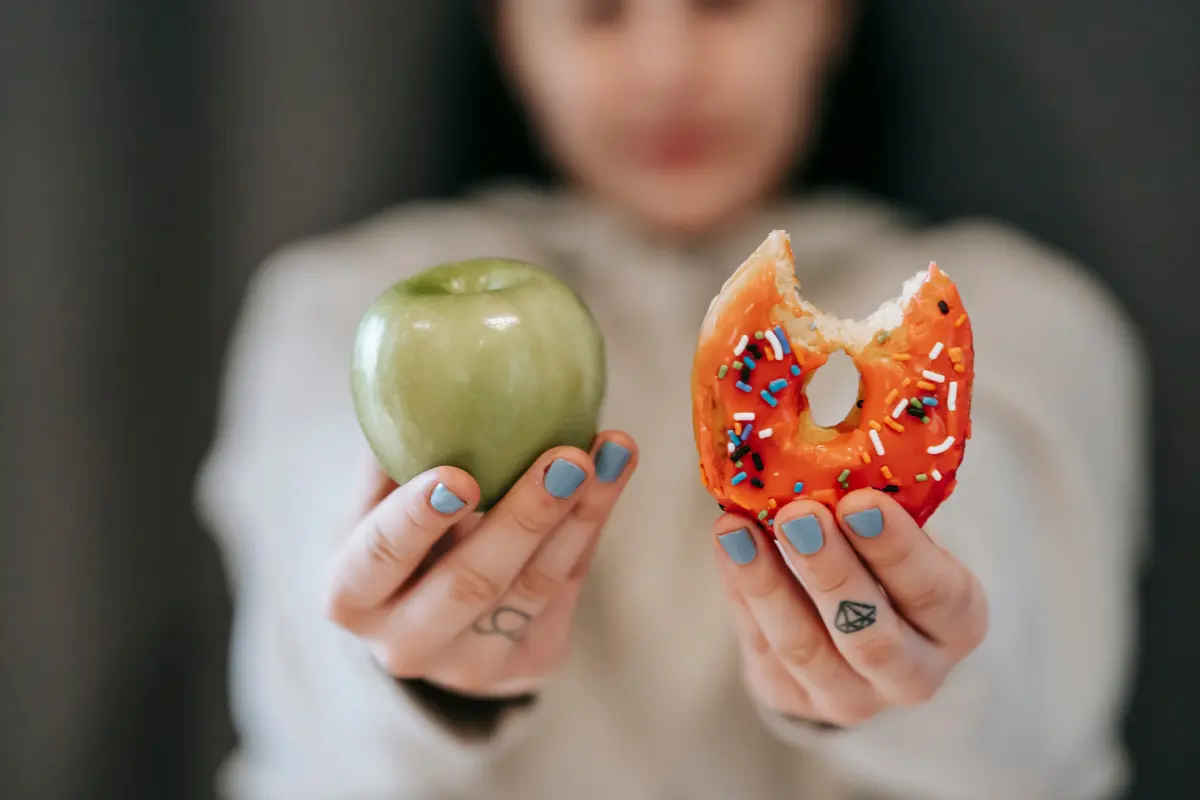
A successful nutrition approach requires you to know what—and how much—you’re eating at each meal. Learning how to read a nutrition label is step one in gaining that knowledge and reaching any weight loss, gain, or performance goal you have.
In this article, we’ll cover the basics of how to read a nutrition label and break down the sections of a nutrition label that are most important when it comes to counting macros and making informed food decisions.

What is On a Nutrition Label?
Let’s go top-to-bottom on a basic nutrition label and touch on each item. Feel free to grab an item with a nutrition label from your pantry or follow along with this nutrition label from Great Value Creamy Peanut Butter:

Serving Size on a Nutrition Label
The first (and arguably most important) information on a nutrition label is the serving size. All nutrition information on a label corresponds with that serving size.
Advertisement
Looking at our Great Value Creamy Peanut Butter, one serving is “2 Tbsp.” or “32g”. The number of carbs, fats, protein and other nutrients indicated on the nutrition label assumes that you eat one serving. For example, there are 180 calories in a serving of peanut butter. If you ate two servings (or 4 Tbsp.), you’d consume 360 calories.
Curious about the difference between tablespoons and grams? Check out this article.
No matter how cool you are, the Party Size bag is not intended to only feed you… the serving size still applies and is crucial to hitting your goals!
Coach tip: Make sure to keep an eye on the “servings per container” right above the serving size. Some packaged foods or sugary drinks may look like a “single serving” bag or bottle but upon further ingredient list inspection, you may find that there are 2-3 servings in a package and you’re eating more than you think!
Nutrition Label Calories
The calories are usually listed in the largest font on your nutrition label. Remember, this is the number of calories you would consume in one serving of the food item.
Advertisement
Calories are the most important factor when it comes to your weight, whether you’re trying to lose weight, gain weight or maintain your weight. Check out the WAG calorie calculator to help you calculate target numbers for your goals.
Your weight is largely determined by your calorie intake vs output. If you burn more than you eat, you’ll lose weight and vice versa. Make sure you pay primary attention to the calories (per serving!) if your goal is related to your weight. Pour out a serving of cooking oil and compare that with a serving of literally any vegetable… as a science experiment.
Macronutrients on a Nutrition Label
Next on a nutrition label is the nutrients section. At WAG Nutrition, our coaching largely revolves around macronutrients (aka “macros”) which are fats, carbohydrates, and protein. You’ll see these three listed here along with the amount of each per serving.
For more detailed info on macros, check out Macros for Cutting if you’re trying to lose weight/fat or Macros for Bulking if you’re looking to add on muscle.
Protein
Protein—best found in meats and fish—plays an important role in muscle gain and maintenance. Your dream body likely has more muscle than you think, so don’t avoid high-protein foods for fear of becoming “bulky”. Some dairy items and nuts have a decent amount of protein as well, but they usually come with more calories from carbs and fats.
Advertisement
Carbs
No, they aren’t the enemy. Carbs give you the energy to perform all activities throughout your day. So they are important and very important if you want to lose weight and burn fat by having intense, productive workouts and solid recovery.
Fats
Finally, fats are responsible for many necessary functions in the body on the cellular level, like regulating hormones and helping your body absorb vitamins and minerals. All fancy words that mean you need fats in your diet. Every gram of fat has nine calories compared to the four calories from a gram of protein or carbohydrate… so they add up fast. Keep this in mind while you’re eating “healthy fats”—there can be too much of a good thing.
Other Nutrients
While macros might be the most important in terms of weight and body composition, other items are included in the nutrient section as they can have an impact on your health metrics.
The FDA suggests keeping trans fat, saturated fat, and added sugars to a minimum while keeping sodium under around 2300mg/day. Americans tend to get these in excess which can result in cardiovascular disease, blood pressure issues, and weight gain [1]. Although less of these is generally better, a 1:1 nutrition coach can help you dig into what works best for your body and assess if these are areas of concern.
But it’s not all bad. Dietary fiber, vitamin D, calcium, iron, and potassium are all included on a nutrition label and are associated with staying regular (if you know what we mean), regulating blood sugar and cholesterol, and foods that are more nutrient dense (read: fewer calories, more nourishment) [1].
Advertisement
Dietary fiber is also largely important in the calculation of a Keto diet. If you’re interested in learning more about that approach, read What is the Ketogenic Diet and is it Right for You?
Ingredients
One more section on the Nutrition Label that is worth checking out is the Ingredients section. When it comes to this list, the fewer ingredients, the better.
So many products in American grocery stores are heavily processed which results in an ingredients list so long that your CVS receipt feels threatened. If there’s an ingredient you can’t pronounce or sounds like a prehistoric dinosaur, you can probably find a more natural alternative.
Coach Tip: If you see the phrase “proprietary blend”, that just means the maker won’t share the amounts of the following ingredients… it’s their secret sauce.
What if My Food Doesn’t Have a Nutrition Label?
If your food doesn’t have a label, give yourself a high five!
Advertisement
In general, label-less foods are limited to unprocessed foods you could find out in nature: fruits, veggies, meats, nuts, etc. It’s relatively safe to assume that raw broccoli, no matter where it’s found, is more or less the same every time… so no label is needed.
With that said, you still need to know what you’re eating. Using a food tracking app like MacrosFirst can help in these situations. Just type in the food you’re looking for and you’ll see a handful of options that may work for you. Look at the first five entries and if they are all similar, go with the first one. If the first one is a wild outlier (way too many or way too few calories/carbs/etc.) go with the second one.
Coach tip: Don’t forget to adjust your entry to the serving size that you are actually eating instead of the serving size in the entry.
Wrapping It Up
Knowledge is power and knowledge comes from learning to read a nutrition label. You wouldn’t drive blindfolded, so don’t stuff your face without knowing what you’re eating.
When it comes down to it, you can fit pretty much any food into a well-balanced diet… as long as it’s in an appropriate amount. Lo and behold, the amounts in each food are all listed on the back of your food! If you need help figuring out appropriate amounts to help you reach your goals, hiring a nutrition coach is the fastest way to do it.
Advertisement
Bo Buser
Schedule a Free Intro Call
Working Against Gravity has led the macro tracking and health space for over a decade. Our team doesn’t just understand the science of nutrition—we’ve spent years mastering the art of tailoring it to fit your life. That means no cookie-cutter plans, just real strategies that have worked for over 30,000 people.
Schedule a free call with our team to learn how working with a 1-on-1 WAG coach will help you reach your goals.





